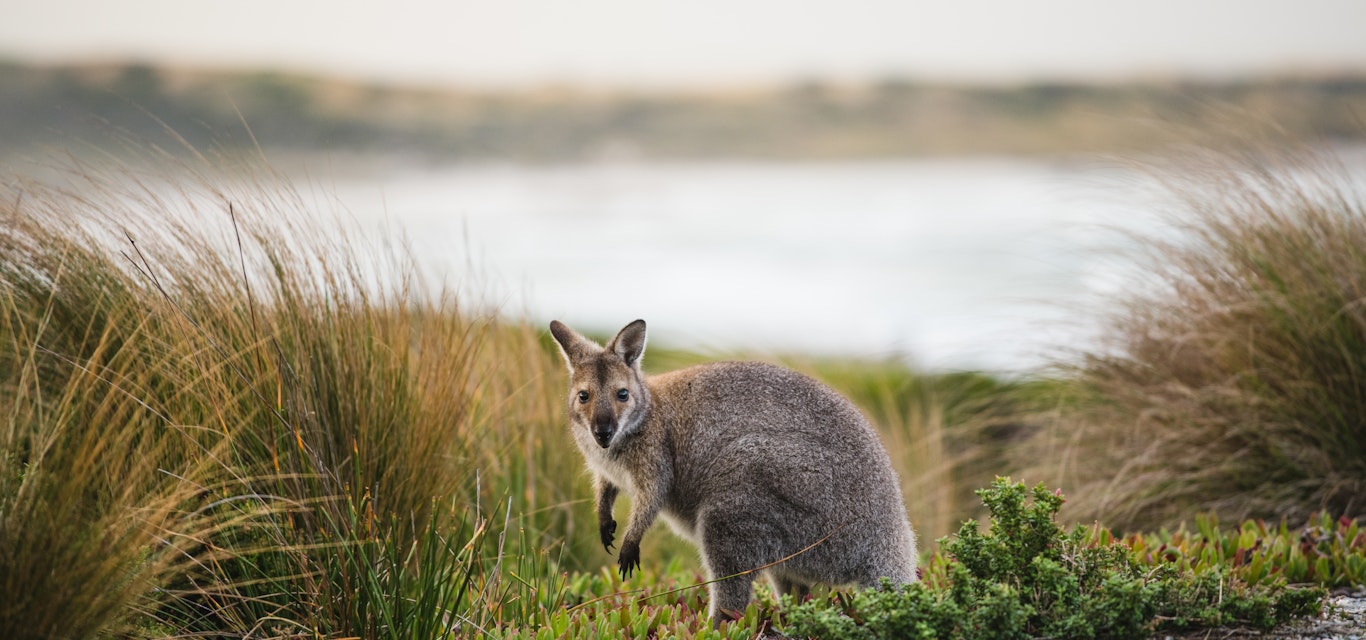Published | 10 October 2023
We're uniting with wildlife rescuers this Animal Road Accident Awareness Day to combat Tasmania’s alarming roadkill crisis.
In partnership with Bonorong Wildlife Sanctuary and Wildlife and Community Together, we've launched a month-long campaign to encourage drivers to slow down from dusk to dawn.
Our Chief Advocacy Officer Garry Bailey said the collaboration aimed to protect the state's precious wildlife and ensure the safety of motorists.
“Tasmania is grappling with a severe roadkill crisis, which poses a dual threat to both our native wildlife and the safety of drivers,” Mr Bailey said.
“Over 500,000 animals are tragically killed on Tasmanian roads each year, and many are native species unique to our state.
"But roadkill also comes at a cost to drivers and is a contributing factor to dangerous crashes.
“Our calculations indicate that in 2023, there will be 1,000 wildlife-related vehicle insurance claims through RACT and a staggering 3,000 in total across the state.
“Research in Australia and Europe has shown the best way to mitigate roadkill is changing driver behaviour, which is why we've decided to add our voice to this campaign.
“We hope together we can raise awareness about roadkill, convey crucial safety messages to the public, and foster positive changes in driver behaviour.”
Dedicated wildlife rescuer and co-founder of Wildlife and Community Together, Kim Rettig said she was extremely privileged to live alongside an abundance of wonderful, unique wildlife.
“Sadly, up to half a million native animals die, often slowly, from injuries caused by a car strike. Shockingly, this equates to about 32 animals per hour in Tasmania,” Ms Rettig said.
“Most people have switched off to the trauma and suffering, it's an ecological disaster, it's time to act.”
“Very few of us would drive past an injured dog who'd been struck by a car, particularly if she was a mother with her puppy beside her, yet this is happening daily with our native wildlife.
Ms Rettig said motorists had become desensitised to roadkill, and that has to change.
“Visitors come to Tassie to see the wildlife, our state could be seen as a wildlife park, a place where we care for and respect them, a place where we keep them safe.
“Other councils in Australia are attempting to address this critical situation by building alternative routes for animals to cross roads, such as culverts, underpasses, rope overpasses, leaving pathways or escape routes when new subdivisions are developed so animals can return to their natural habitat easily. Tassie is a wildlife haven; it is time we followed their example,” she said.
Mr Bailey highlighted the importance of vigilance while driving, advising motorists to scan road edges for wildlife and exercise extra caution during dusk and dawn.
“Planning trips ahead and driving mainly during daylight hours are other ways we can help prevent roadkill in our state,” he said.
“However, if you encounter an animal on the road and it's too late to brake, please do not take evasive action by swerving - your life is your most valuable asset.”
For tips on how to drive safer to avoid wildlife, please take a look at the article below. For wildlife rescue please contact Bonorong Wildlife Sanctuary.
Acting to prevent roadkill
In this article, we share our advice on how to drive safer to avoid wildlife and how to save a life with a pouch check.
